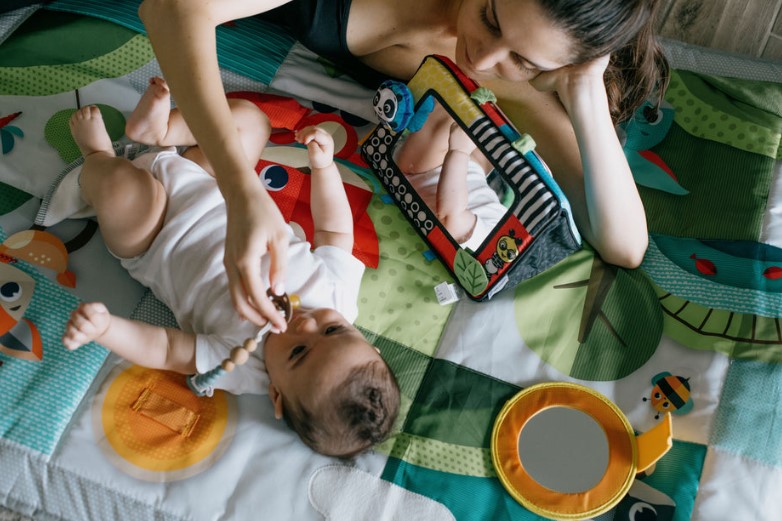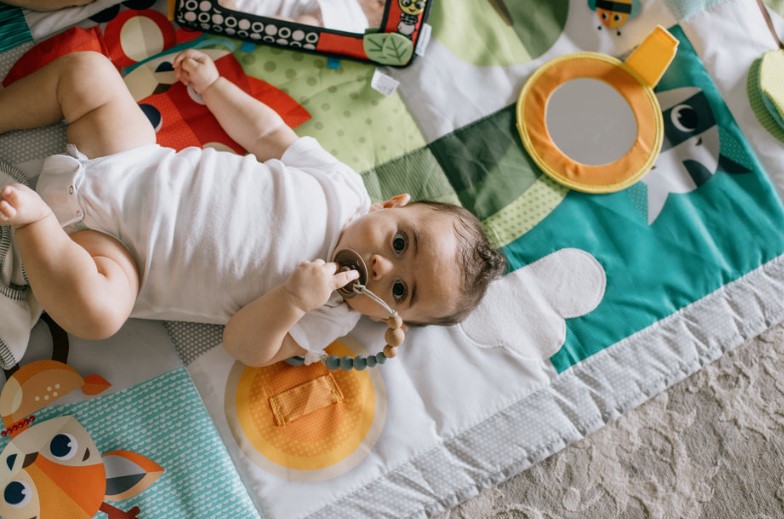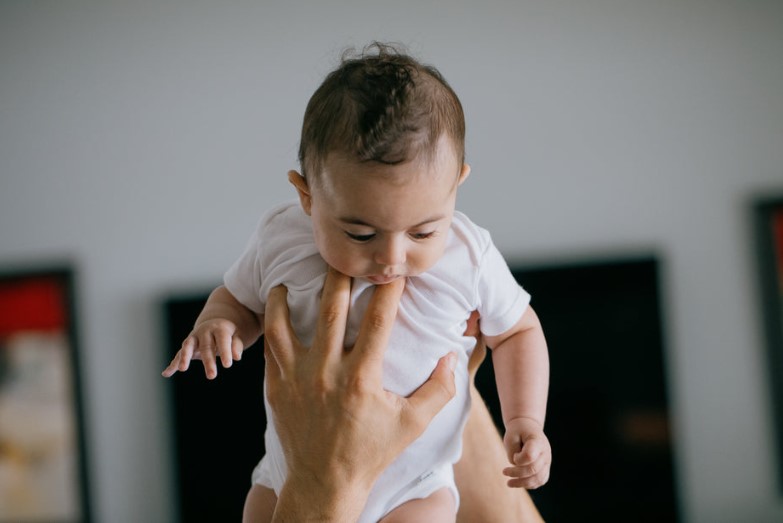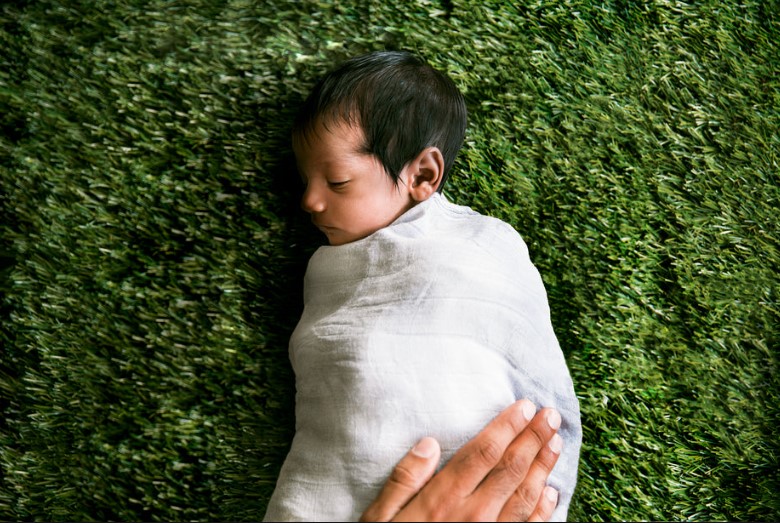Sleep Training For Newborns Guide: Every Parent Should Know
Welcoming a child into the world is a wonderful moment for every couple. Still, it can also be a stressful experience for new parents, particularly in terms of their sleeping patterns. Many new parents struggle to get their babies into good sleeping habits, which may leave them fatigued and upset. Sleep training can help with this. You’ve probably heard of sleep training for newborns if you’re a new parent, but you may not know much about it.
Let’s think about you coming back home after a long day working. Feeling exhausted and just want to have some breaks with your favorite movies along with a cup of tea? However, the cry from the room resounds and you continue to work in your own resting place – terrible!
It’s common for a new parent to have questions and worries regarding sleep training. What exactly is it? How does it function? Is it safe for your child? This guide will answer all of your concerns and more, providing you with the information that you need to develop a healthy sleeping schedule for your infant. So, let’s dive in and explore the world of baby sleep training!
When to Start Sleep Training

Many parents ask whether it is appropriate to begin sleep training for newborns. The sweet spot, according to experts, is between 4 and 6 months old. Babies at this age are developmentally equipped to sleep through the night without needing to feed and can sleep for six to eight hours. Furthermore, sleep training should begin before your infant develops, depending on sleep associations such as rocking or breastfeeding to sleep.
Sleep Training Methods
Parents utilize a variety of sleep training strategies, many of which can be helpful. What is most comfortable for you and your kid will determine the ideal strategy for your family. There are some effective methods applied by many parents:

The Cry It Out Method (CTO)
The Cry It Out method (CTO) is a contentious sleep training technique that entails letting a baby cry for a set amount of time before interfering. The CTO approach is to teach a baby to self-soothe and go sleep on his or her own.
Rather than waiting until a baby is sleeping, the CTO approach generally entails putting them to sleep while they are still awake. When the infant starts crying, parents are advised to wait a certain period before coming in to give comfort. The waiting period is gradually increased over time until the baby learns to self-soothe and fall asleep on his or her own. It is critical to highlight that the CTO approach should only be utilized with healthy newborns who are not hungry or in need of a diaper change and have no underlying medical difficulties.
The Ferber Method

The Ferber Method, also known as the “graduated extinction” method, is another popular approach for sleep training infants. The Ferber Method involves gradually increasing the amount of time that parents wait before going into the baby’s room to offer comfort during night wakings. Cry It Out is comparable to the Ferber Method.
Do your usual nighttime routine before beginning sleep training with this strategy. Next, while your child is still awake, place them in their cot and then exit the room. When you’ve left your child, you’ll return to the room for a few minutes, swiftly calm your youngster, and then depart again. Each time you go, the time it takes you to return increases. Continue doing this until your child falls asleep.
The Check and Console Method
The Check and Console Method involves progressively increasing the length of time between soothing your infant during sleep training. That is another version of the Ferber method.
You’ll put your sleepy but alert infant to bed and then leave the room. Wait a certain period of time before moving in to calm your infant with a soothing voice and soft touch. If your infant continues to cry after you’ve reassured them, leave the room again and wait a little longer before returning. You’ll progressively extend the duration between checks over time, allowing your infant to learn how to go to sleep without being coaxed.
The Fading Method

The Fading Method, also known as gradual extinction or camping out, is a sleep training technique that teaches newborns to self-soothe and falls asleep on their own. Parents can do this while standing or sitting on a chair in their child’s room, a technique known as the Chair method.
When opposed to the Cry It Out method, the Fading Method is a milder approach since it allows for some parental comforting and intervention in the beginning. The parent gradually steps away from their child while remaining in their sight before leaving the room, in this strategy. The infant is given a chance to develop self-soothing strategies and to fall asleep without relying entirely on parental interaction.
Related: How to Play with a Newborn – 14 Tips and Ideas
The “No Tears” Method
The “No Tears” method is a sleep training strategy that emphasizes reacting to a baby’s cries and demands as soon as possible, frequently by co-sleeping and carrying the infant in a carrier or sling throughout the day. As soon as their infant starts crying, parents must calm, console, or embrace him. The goal is not to let the infant scream endlessly and to assist him in falling asleep on his own.
Parents using the “No Tears” approach avoid letting their kids cry alone for long amounts of time and instead attend to their needs instantly. The goal is to create a safe and pleasant space that promotes safety and trust, allowing the infant to feel secure and develop good sleeping patterns over time.
Pick up, put down method

The Pick up, Put Down Method requires picking up your crying baby, soothing them, and then placing them back in their crib to encourage them to comfort themselves to sleep. This strategy might be useful for parents who choose a softer approach to sleep training or for newborns who struggle to go to sleep without physical comfort from their parents.
The Pick up, Put Down Method’s primary principle is to respond to your baby’s cries in a helpful and soothing manner, without letting them develop a dependency on being carried to fall asleep. As the baby cries, the parent takes them up and places them back down; repeat the process till your baby falls asleep.
10 Tips For Successful Sleep Training
All parents desire their newborns to have the most peaceful and restful sleep, yet accomplishing it can be challenging. Several new parents find it difficult to get their babies to sleep continuously through the night. If you’re one of them and want to provide your newborn with a good night’s sleep, then worry not, as these sleep training tips are here to help you achieve that.
1. Create a bedtime routine.

Infants thrive on consistency, and having a consistent bedtime routine signals to your child that it’s time to sleep. Begin by establishing a pleasant environment in your baby’s room by lowering the lights and playing soothing music. Keep the routine brief and simple so that it may be readily performed every night. A consistent bedtime routine can help them quiet down and drift off to sleep. Set a sleep schedule for your child (usually from 8 p.m. to 7 a.m. because newborns spend a lot of time sleeping) and adhere to it even if you are away from home.
2. Recognize when your infant is weary.
The best time to sleep is when drowsiness hits. Establishing a regular sleep habit and keeping your infant from being overtired can make falling and staying asleep more difficult. Watching your baby’s behavior and learning to detect sleepy indicators, like as wiping their eyes, yawning, or getting fussy, can assist you in determining when it’s time to lay them down for a nap or to sleep. You can help your infant establish healthy sleep patterns that will benefit them by listening to their signals and reacting to their sleep demands.
3. Put the baby down awake.

This means putting them to sleep while they are still awake instead of rocking or feeding them to sleep. Let your infant settle down on their own when you put them down. This technique is to encourage children to soothe themselves before falling asleep, which will result in better sleep for both you and your child.
4. Postpone your reaction time.
As your baby awakens or screams, resist the impulse to hurry to their side. Let them calm down on their own instead. By delaying your reaction time, you may teach your child to self-soothe and go to sleep without relying on you. This can eventually lead them to be independent in their sleep process.
5. Make your sleeping environment as comfortable and safe as possible.

Sure, newborns should be kept in a portable crib or bassinet safe instead of a wide bed. Begin by selecting the appropriate bedding and mattress, ensuring that the room is at a suitable temperature, and removing any potential risks in the sleeping space. Keeping the room dark and quiet is also critical, as infants are often distracted by noise and light. You can help your child sleep soundly and wake up refreshed by creating a cozy and secure sleeping environment.
6. Set up a plan and stick to it.
Setting specific sleep training goals and remaining committed to the process even when it is difficult. There are several aspects to consider, whether before or after sleep, such as your baby’s age, sleep patterns, temperament, and any existing health conditions. You can help your infant establish healthy sleep patterns for the long run by having a clear and regular routine.
7. Maintain your composure and avoid setting high expectations.

Remember that each kid is distinct and will react to sleep training in their own way and at their own pace. This might take a long time, perhaps much more than usual, so stay calm and patient until you see the results. Don’t be disheartened if it takes longer than planned, and avoid comparing your baby’s progress to that of others.
8. Keep your distance from your child.
Although having a separate bedroom for your baby is not a requirement for sleep training, it’s crucial to keep in mind the end goal: fostering your child’s independence and ability to self-soothe. The purpose is to help your baby learn how to fall asleep on their own without relying on your presence or assistance. This is particularly significant when utilizing methods like the Fading method, which strives to encourage self-regulation and autonomy in your child.
9. Recognize that there will be some difficult nights ahead.

Anticipating difficult nights and mentally preparing yourself can help you stay committed to the sleep training plan. By managing your expectations and predicting potential challenges, you can better prepare yourself for what’s to come, rather than feeling disappointed or frustrated when unexpected obstacles arise.
10. Choose a sleep training method
Certainly, the sleep training techniques discussed above may not be a one-size-fits-all solution for your child. It’s crucial to take the time to determine which approach works best for your little one, as some may yield positive results, while others may hinder progress. Thoroughly researching and carefully selecting a method that aligns with your values and fits your lifestyle is paramount. You should feel confident and able to adhere to the plan for the best chance of success.
When to call the pediatrician

If you are having difficulty sleep-training your kid, you should seek advice from your pediatrician. While there may be some setbacks as you attempt to create healthy sleeping patterns, there are several red signals to look out for. If your kid is regularly weeping for long periods of time, has erratic breathing patterns, or develops a persistent fever, it is essential that they see a medical professional. Remember, it’s alright to ask for help, and your pediatrician is there to support you and your baby’s health and well-being.
Check Out:
Conclusion
Sleep training for newborns can be challenging, but it’s an important process that can make a significant difference in a child’s sleep habits and overall well-being. The importance of quality sleep is indisputable, which directly affects the health, cognitive ability and development of the baby. The Sleep Training For Newborns Guide: Every Parent Should Know offers valuable tips and techniques to help parents create a conducive sleeping environment for their baby, and choose a sleep training method that suits their unique needs.
Bear in mind that every child is distinctive and may react in various ways to different sleep training methods. It’s important not to feel disheartened by any difficulties you may encounter along the way, and to keep in mind that a restful night’s sleep is attainable for both parents and babies.
Rose Bryne
Hi, I’m Rose! I love animals and spending time with kids. At Loveable, I help people find unique gifts for special occasions like Valentine’s Day, housewarmings, and graduations. I enjoy finding gifts for kids, teens, and animal lovers that match their interests and personalities. Making gift-giving a pleasant experience is my priority. Let me assist you in finding the perfect gift!
If you love this post, share it with your friends!
